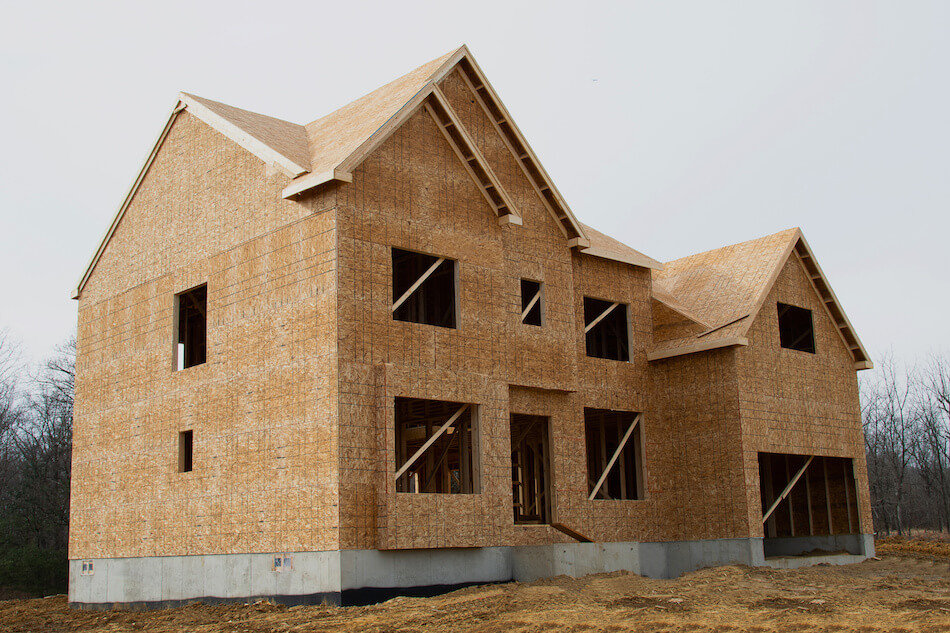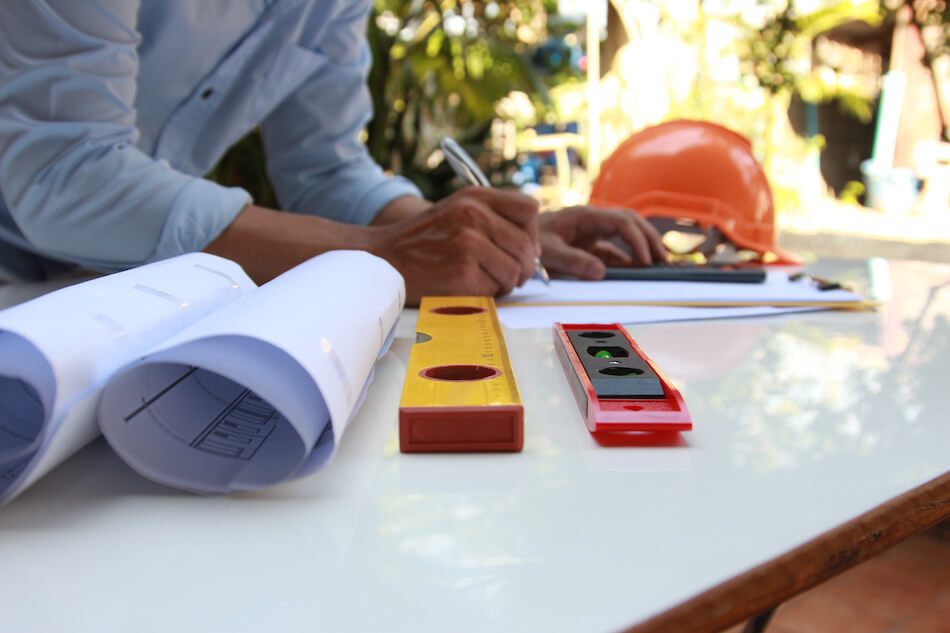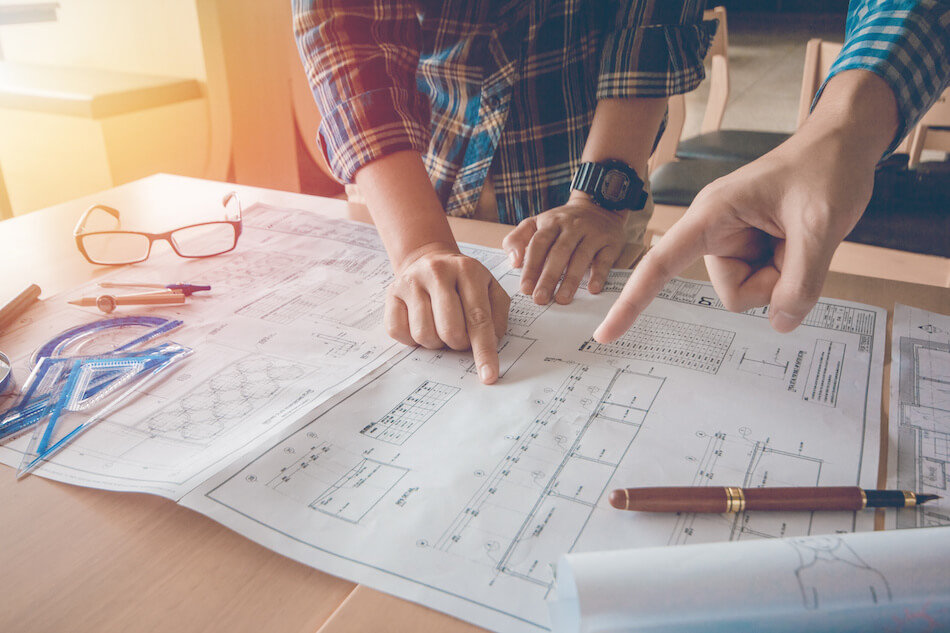Home Building Checklist: 7 Steps to Follow For the Dream Home
Posted by Justin Havre on Monday, February 19th, 2024 at 9:35am.
 Setting out to build your home is a significant milestone, and navigating this venture requires a reliable home-building checklist. From securing the plot to selecting the perfect finishes, we'll guide you through new construction homes without the fluff. Get ready for a straightforward, step-by-step approach to transform your blueprint into the house of your dreams.
Setting out to build your home is a significant milestone, and navigating this venture requires a reliable home-building checklist. From securing the plot to selecting the perfect finishes, we'll guide you through new construction homes without the fluff. Get ready for a straightforward, step-by-step approach to transform your blueprint into the house of your dreams.
For informational purposes only. Always consult with a licensed real estate professional before proceeding with any real estate transaction.
Key Takeaways
- Careful planning, including setting a realistic budget, defining must-haves, and understanding local building codes, is critical to a successful home-building experience.
- Assembling a skilled team of professionals, including architects, builders, and various subcontractors, is essential in bringing your home-building project to fruition.
- The home building process involves numerous detailed steps, from land acquisition and securing financing to designing the home with energy efficiency in mind and managing the construction with a comprehensive timeline and budget oversight.
Preparing for Your Home Building Journey
Buying a new construction home is an exciting endeavour, especially when you're fully customizing it from the ground up. Yet, it can feel overwhelming without adequate preparation. Careful planning is crucial, from setting a budget and identifying must-haves to understanding building codes and regulations.
This preparatory phase paves the way for a seamless home-building journey, enabling you to make well-thought-out decisions and manage expectations. Here are the critical steps in the preparation process for your home-building journey.
Setting a Budget
Setting a budget is an essential primary step in building a home. It should cover costs of land acquisition, construction, and contingency for unexpected expenses. Allocating funds for distinct stages of construction, like framing, which makes up roughly 18% of total construction cost, is critical.
Keeping your budget realistic and flexible helps you save money, navigate financial decisions confidently, and allows you to secure financing to build your dream home without financial strain.
Identifying Must-Haves
Defining your non-negotiable features is an important phase in the process of home building. These are the must-have elements in your new home, like:
- a dream kitchen
- outdoor living spaces
- unique bathroom features
- specific utility areas
Prioritize these features in your ultimate home building checklist. The goal is to add convenience and functionality to future-proof your home to adapt to evolving needs and lifestyles.
Researching Building Codes and Regulations
Adhering to local building codes and regulations is indispensable when constructing a new home. These rules include aspects like:
- Zoning
- Grading
- Septic
- Construction, including obtaining a building permit
- Electrical
- Plumbing permits
These rules help ensure your construction meets safety, zoning, and environmental protection norms.
Researching local zoning and ordinances and checking for flood zone designations using FEMA's resources will ensure proper compliance and reduce risk.
Assembling Your Dream Team

Building a home isn't a one-person job. It requires a team of skilled professionals, each fulfilling specific roles and responsibilities, to bring your dream home to life. Your building team includes:
- Architects
- Builders
- Electricians
- Plumbers
Finding the Right Architect
Your architect is the one who turns your vision into reality. It's crucial to find an individual whose experience matches your desired home type. Evaluating the architect's past work through their portfolio can offer insights into their design style and expertise, helping you decide if they meet your requirements.
A good reputation and positive references from past clients are also crucial in evaluating their suitability.
Choosing a Reputable Builder
Your builder has a significant part in turning your home design into an actual structure. It's important to investigate the best builders in your area, check out their past projects, and interact with their previous clients to assess their work quality and client satisfaction.
Remember, the success of your home building project largely depends on the competence and reliability of your home builders and the building supply firm you choose to work with.
Collaborating with Subcontractors
Subcontractors manage specialized aspects of home construction, like plumbing, electrical, and HVAC systems. From the outset, clarify guidelines and expectations with subcontractors, including project details, timelines, and payment schedules.
Effective communication between you, the general contractor, and the subcontractors is crucial to ensure that specialized work aligns with the project timeline and meets standards.
Selecting the Perfect Plot
Selecting the appropriate plot for your home is a significant decision in the process of home building. Consider factors like terrain, accessibility to utilities, and adherence to local zoning regulations when assessing a potential property. Such aspects can significantly affect the viability of development and the overall project success. Remember, the land you choose will be the foundation of your dream home, so it's worth investing time in finding the perfect plot.
Evaluating Land Attributes
When buying land for your new home, consider aspects like size, location, and potential limitations of the property. The property's location, proximity to amenities, transportation, and neighbourhood characteristics also significantly impact your quality of life.
Furthermore, it's important to explore any homeowners' associations (HOAs) and deed restrictions that could dictate aspects of the home's design and how the property is used.
Conducting a Land Survey
A land survey is required to precisely identify property boundaries and ensure no boundary disputes or encroachments that might result in legal problems. It could also reveal right-of-ways or easements on the property, potentially restricting building areas and limiting the use of certain parts of the land. Grasping these potential issues from a reputable property survey is key while drafting your building plans.
Securing Financing for Land Purchase
The next vital step in the home-building process is securing financing. Traditional mortgage loans may not be the best fit for land acquisitions, mainly if the land is raw or unimproved. Specialized land loans, like lot loans for buying buildable land and land-only loans for raw land, might be better suited for financing a land purchase. Remember to compare terms from various lenders, including interest rates, down payment requirements, and repayment schedules.
Designing Your Ideal Home

Once you've secured the land and assembled your dream team, the subsequent step is creating the design for your ideal home. Maintaining strong and regular communication with your building team is critical for a successful design phase.
Collaborating with Your Architect
Working with your architect is key to realizing your vision. Here are some tips to help you have a successful collaboration:
- Set clear communication norms
- Ask direct questions
- Avoid impulsive reactions to frustration
- Have regular meetings
- Keep diligent record-keeping
Following these tips ensures that your vision and preferences are accurately incorporated into the design plans. Always seek clarification and use 3D modelling and virtual walkthroughs to understand the proposed design better.
Selecting a Floor Plan
Choosing the best floor plans will boost your home's functionality and versatility. It should cater to the required number of bedrooms and bathrooms, offer ample storage space, and include zoning to distinguish between private and common areas.
To achieve a cohesive aesthetic, your floor plan should complement your furniture, decor, and colour choices.
Incorporating Energy Efficiency
Integrating energy-efficient features into your home design can result in lower energy costs and a more comfortable living environment. Key components of energy-efficient design include:
- High-performance windows
- Advanced insulation
- Efficient HVAC systems
- Cool roofs
- Alternative designs, such as earth-sheltered homes
Smart home technologies like smart thermostats and air conditioning enable real-time energy management for further efficiency and cost savings.
Don't Forget the Garage
A well-organized garage can add considerable functionality and value to your home. Whether used for parking, storage or as a workspace, your garage design should aim to optimize its use.
So, don't forget to plan for a multifunctional garage when designing your dream home.
Decide Where You Want the Gas Tank
Deciding the location of your gas tank is a significant factor in your home design. Consider aspects such as safety, aesthetics, and accessibility when determining the position of your gas tank. Remember to liaise with your local gas company to ensure correct installation and adherence to safety regulations.
Navigating the Construction Process
With your design ready, it's time to begin construction. Each phase of construction plays a significant role in realizing your dream home. The construction process includes:
- Site preparation
- Laying the foundation
- Framing
- Installing interior finishing touches
Site Preparation and Foundation
The construction phase kicks off with site preparation at the building site, which entails:
- Clearing debris, rocks, and trees
- Possibly digging for the septic system
- Grading the site to level the ground for the foundation and guarantee proper drainage.
Once the site is prepared, the foundation is set. This involves installing footings using poured concrete and rebar to provide support and prevent sinking.
Framing and Exterior Work
Once the foundation is in place, the framing process commences. This process includes constructing your home's skeletal structure comprising the walls, ceiling joists, and roof framing. After the frame is finalized, the exterior work starts, which involves installing windows and doors, applying siding, trim, and masonry, and completing the roof, gutters, and garage doors.
Interior Finishing Touches
The interior finishing touches convert the bare structure into a cozy living space. These touches encompass:
- Installing drywall on walls and ceilings
- Applying paint or wallpaper
- Installing flooring
- Fitting interior doors, baseboards, trim, and moulding.
The final touches include the installation of cabinetry, countertops, vanities, and the necessary hardware and bathroom accessories, as well as installing doors and mirrors, using all the materials required for a perfect finish.
Managing Your Project Timeline and Budget

Overseeing your project timeline and budget is a crucial aspect of the home-building process. It entails developing an all-encompassing timeline with buffer periods to compensate for unexpected delays and scrutinizing expenses to ensure your project remains on track and within budget.
Establishing a Comprehensive Timeline
Developing a comprehensive timeline is critical to a smooth construction process. Your timeline should include:
- Buffer periods, or contingencies, to accommodate unexpected delays
- Regular adjustments to the buffer to mirror real-time progress
- Accounting for any uncertainties encountered during the process
This will help ensure that your construction project stays on track and minimize potential delays.
Monitoring Expenses
Monitoring expenses is critical to remaining within your budget. This entails:
- Collecting cost data from invoices, receipts, timesheets, and reports
- Contrasting actual expenses with budget estimates
- Regular financial scrutiny and consistent reporting
These actions can help you identify cost overruns early and make essential adjustments.
Handling Unforeseen Issues
Unexpected issues are a typical part of any construction project. When they arise, they can often be managed by issuing a change order, which outlines the problem, cost, and schedule impact and must be authorized by the homeowner.
Open communication between you and your contractor is crucial to preventing issues from becoming significant points of contention.
Final Steps and Moving In
After construction completion, it's time for the final steps before moving in. These include the final walkthrough with your builder, getting the space ready for move-in, and changing the locks for security reasons.
Conducting the Final Inspection
The final walkthrough confirms that your new home is in the agreed-upon condition. During the walkthrough, you should:
- Examine all windows, doors, appliances, and electrical systems
- Check for any signs of damage or incomplete work
- Note any discovered issues and relay them to the builder for resolution.
Addressing Any Remaining Issues
Even after the final walkthrough, a few issues might be left to tackle. These could vary from minor repairs to more significant concerns that demand more substantial work. Any remaining issues should be conveyed to the builder, and a timeline for their resolution should be agreed upon.
Preparing for Move-In Day
Once all outstanding issues are resolved, it's time to prepare for move-in day. This stage involves devising packing and unpacking strategies, arranging essential services, and ensuring your new home is clean and ready to move in. Remember, moving into a new home is an exciting milestone, plan ahead in order to enjoy a stress-free move.
Mistakes to Avoid When Building Your House
Constructing a home is a complex process, and making mistakes is easy. However, you can avoid many common pitfalls through meticulous planning and clear communication. Being aware of potential mistakes, such as underestimating costs, rushing decisions, or neglecting future planning, can save you time, money, and stress. You also need to be on the lookout for red flags with new construction homes, as these hard-to-see issues can cost buyers thousands.
Get Started With Your Home Building Checklist
Building your dream home is an exciting journey. From the initial planning stages to the final move-in day, each step brings you closer to living in a space that's uniquely your own. By following this comprehensive guide, you'll be well-equipped to navigate the home-building process confidently. Are you ready to embark on the journey of building your dream home?
Frequently Asked Questions
How much should I budget for a new home build?
Your budget will depend on numerous factors, including location, architectural requirements, materials, amenities, and more. The average cost of building a brand-new home ranges from $600,000 to $700,000. Generally, it's better to over-budget than to lowball it.
What is the importance of a land survey when selecting a plot for home building?
A land survey is essential for accurately identifying property boundaries and preventing disputes or legal issues.
What is the role of an architect in a home-building project?
The role of an architect in a home building project is to translate your vision into a functional and aesthetically pleasing design that suits your needs and lifestyle. Architects play a crucial role in bringing your dream home to reality.
What are some energy-efficient features I can incorporate into my home design?
Incorporate high-performance windows, advanced insulation, efficient HVAC systems, cool roofs, and smart home technologies to make your home design energy-efficient. These features can help reduce energy consumption and save on utility costs.
What are the final steps before moving into my new home?
Before moving into your new home, conduct a final walkthrough, prepare the space for move-in, and change the locks for security.
For informational purposes only. Always consult with a licensed real estate professional before proceeding with any real estate transaction.
